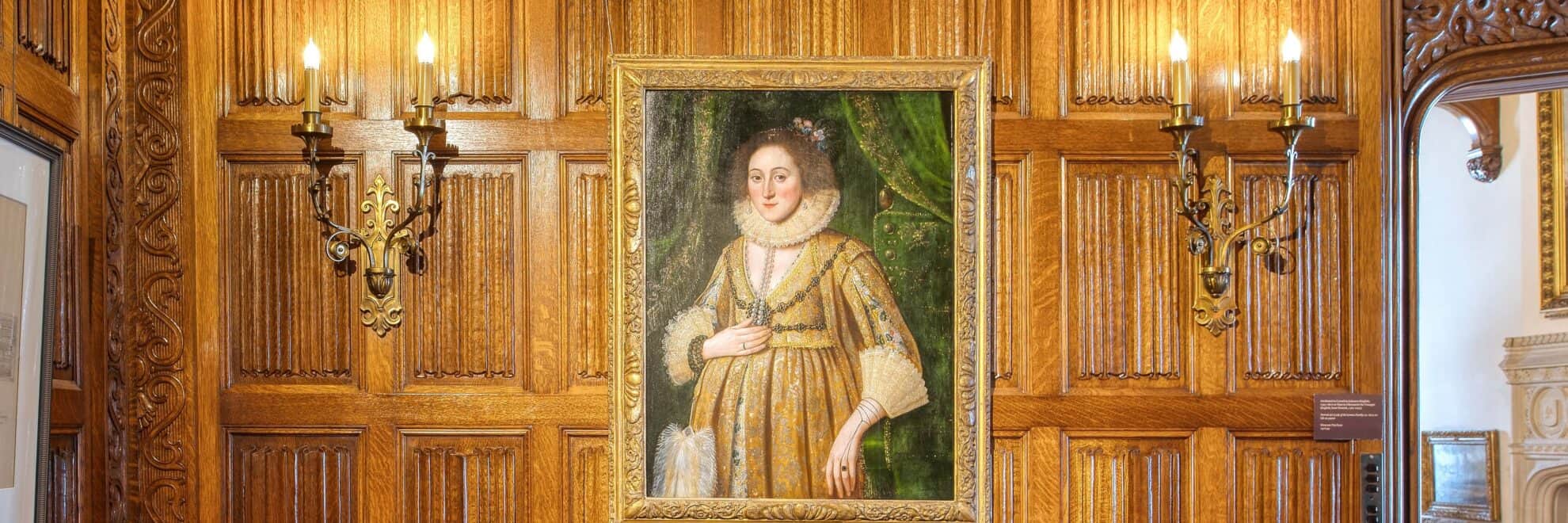 Phil Weston
Phil Weston Art Collection
A collection of more than 1,000 paintings, sculptures, furnishings, and decorative objects
With more than a thousand artworks in its collection, the Paine displays many items from Nathan and Jessie Kimberly Paine’s collection of fine art and decorative objects. Most notably, it features French Barbizon and American landscape paintings from the late 19th and early 20th centuries that were primarily purchased in the mid-1920’s. The estate’s gardens also feature several sculptures as focal points.
While a majority of the collection was acquired by the Paines, it has also grown substantially through donations and purchases while continuing to reflect the subjects and spirit of the founders’ original gift.
Paintings
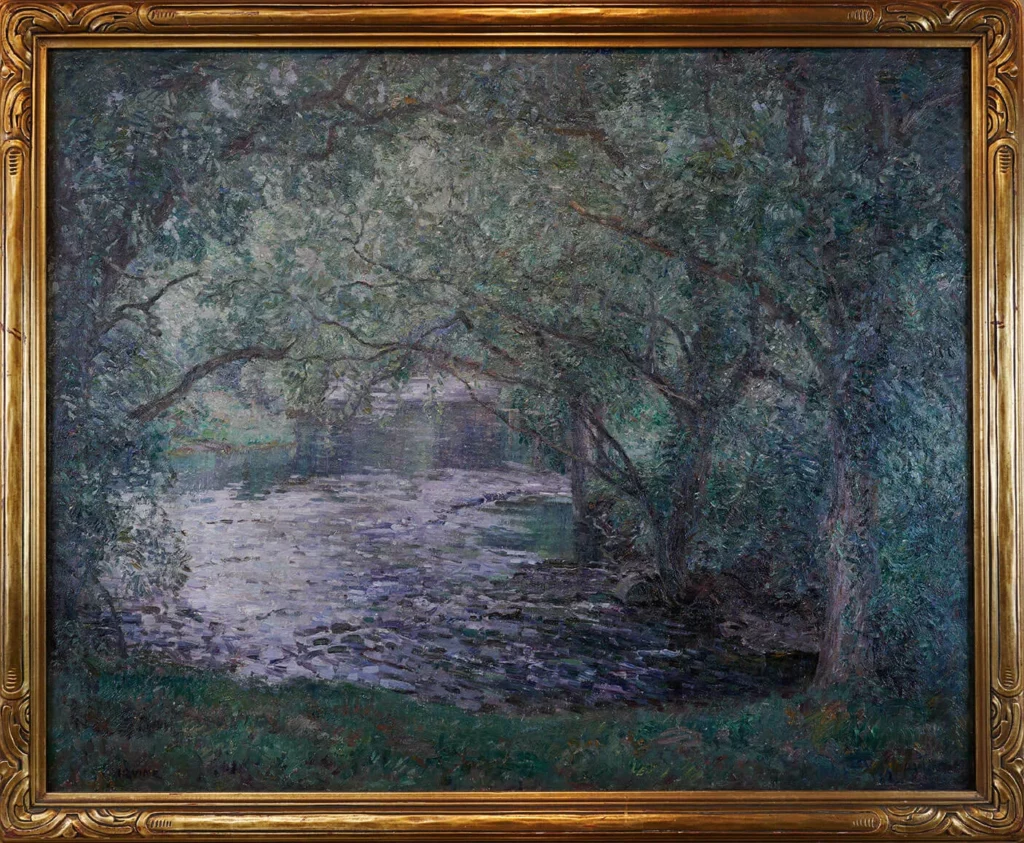
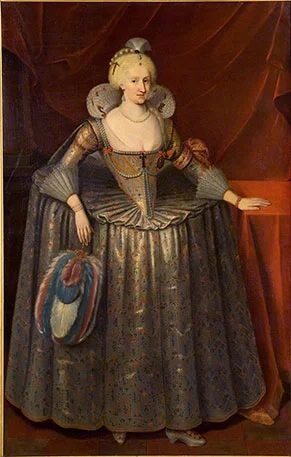
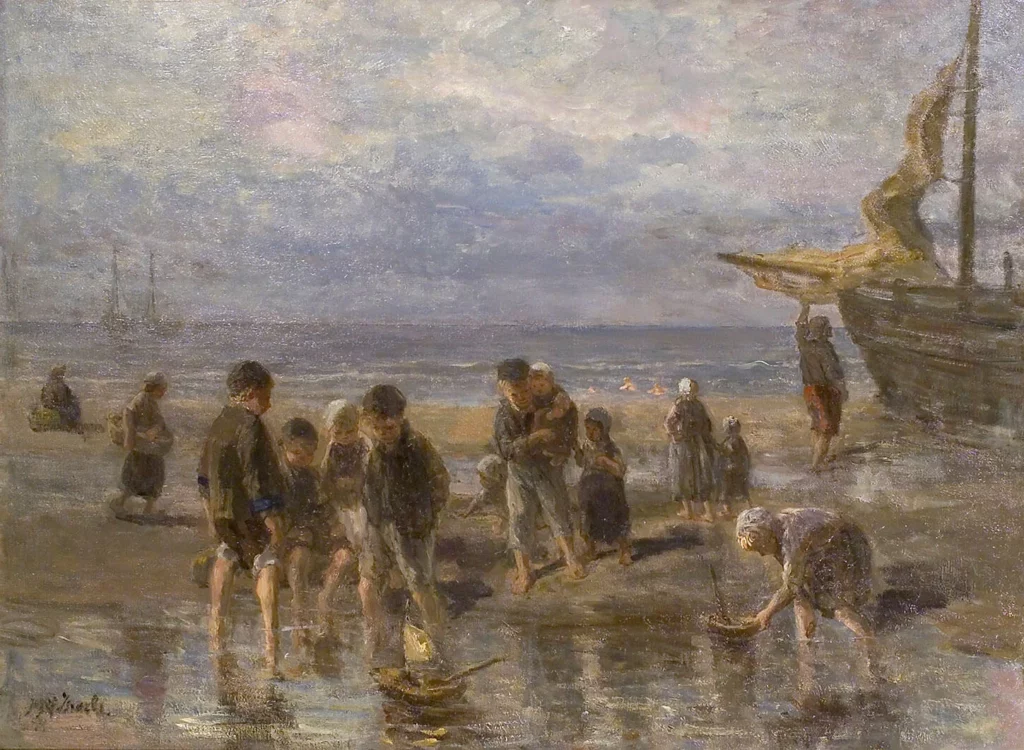
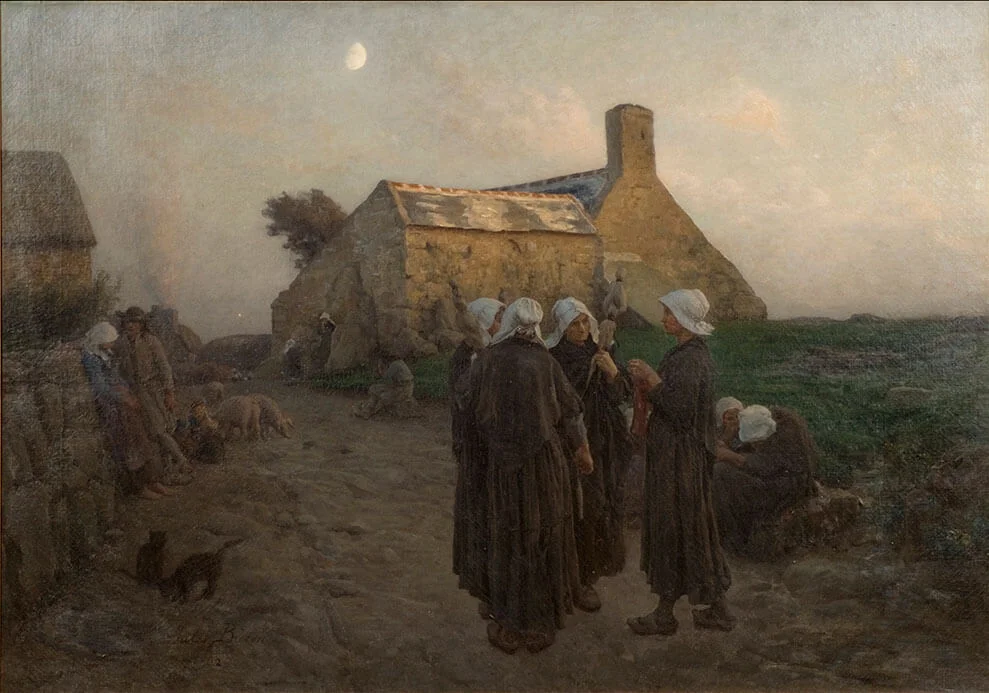
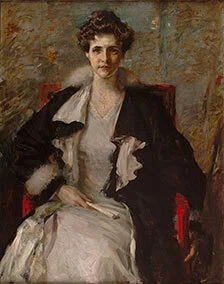
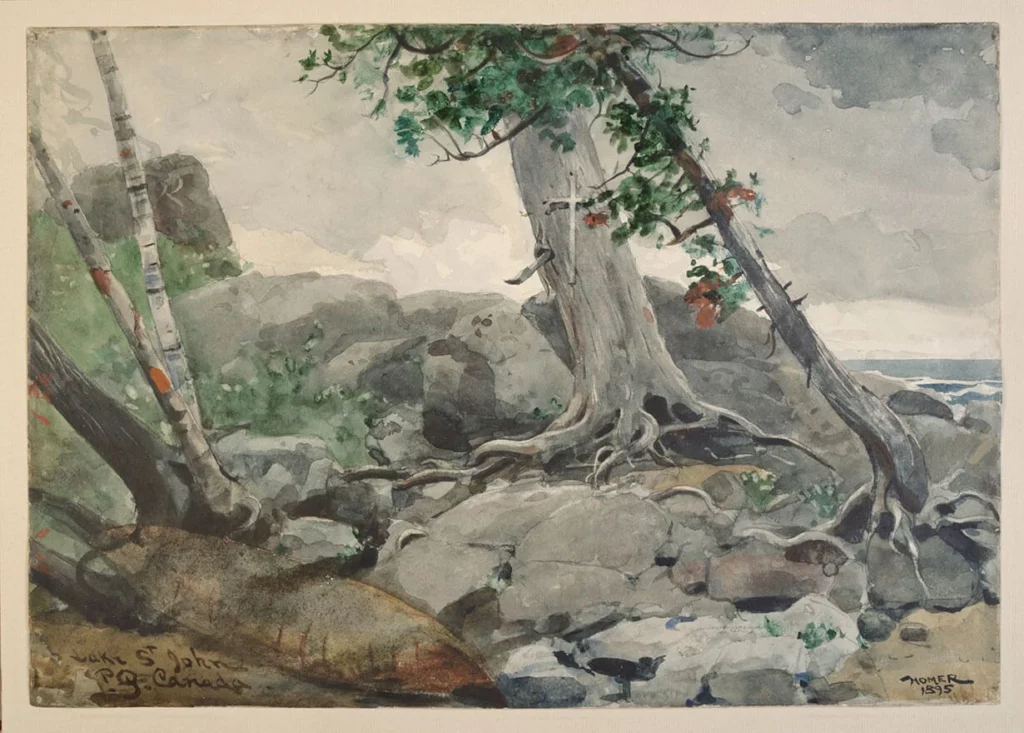
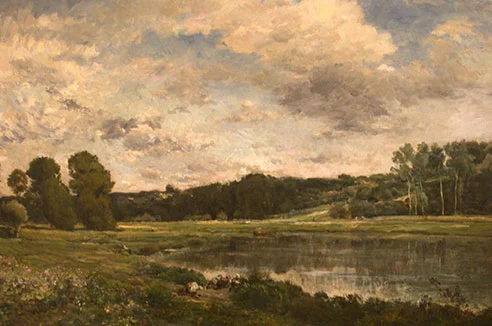
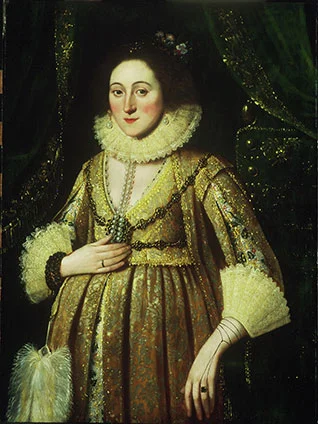
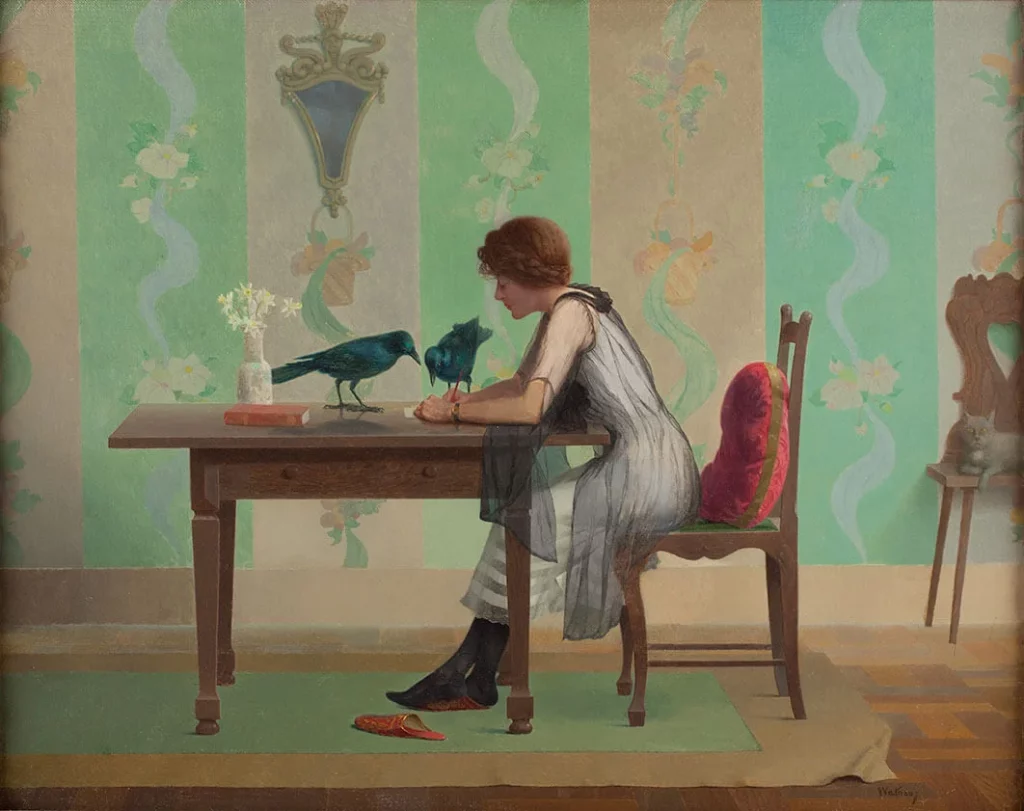
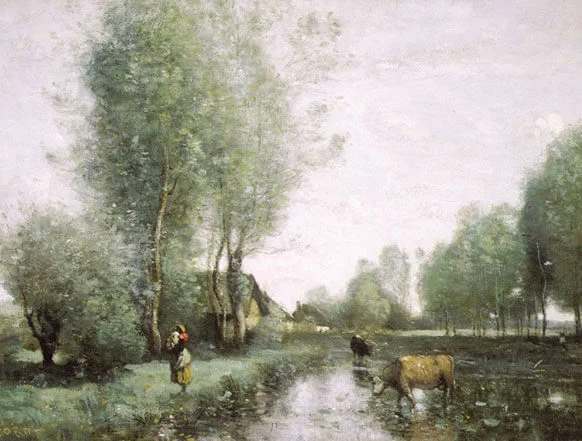
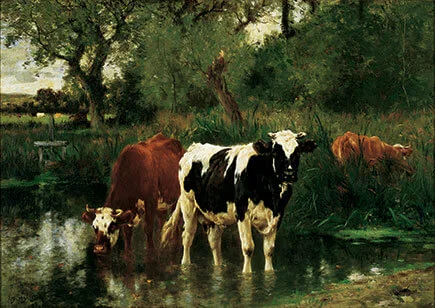
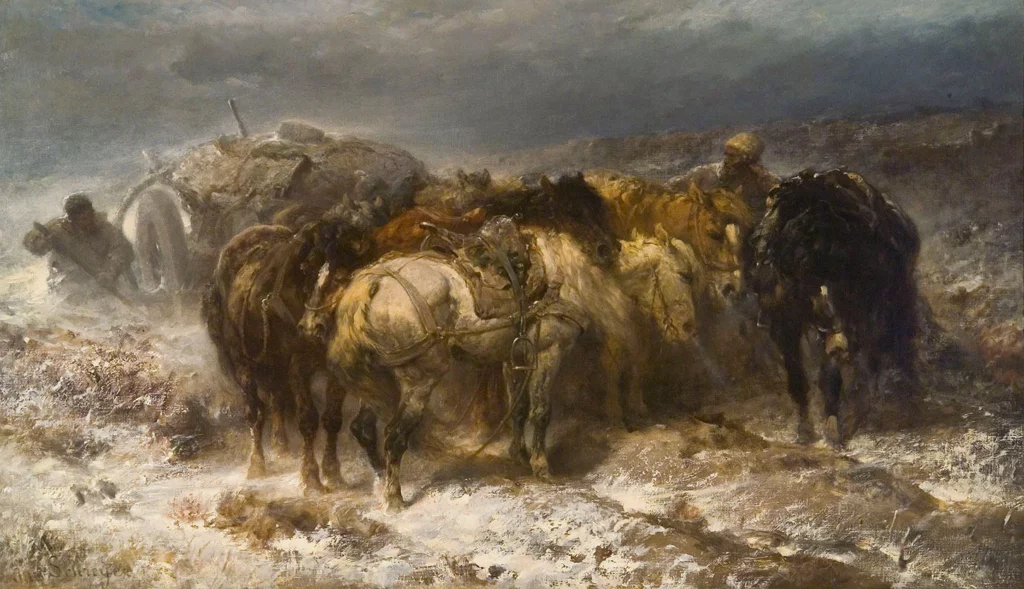
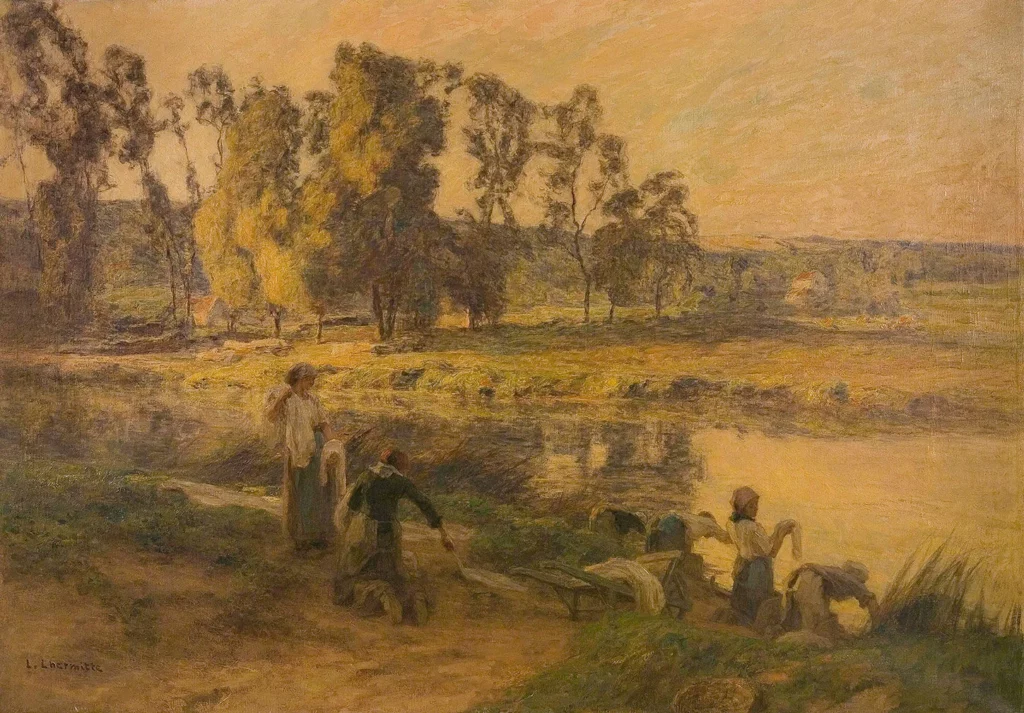
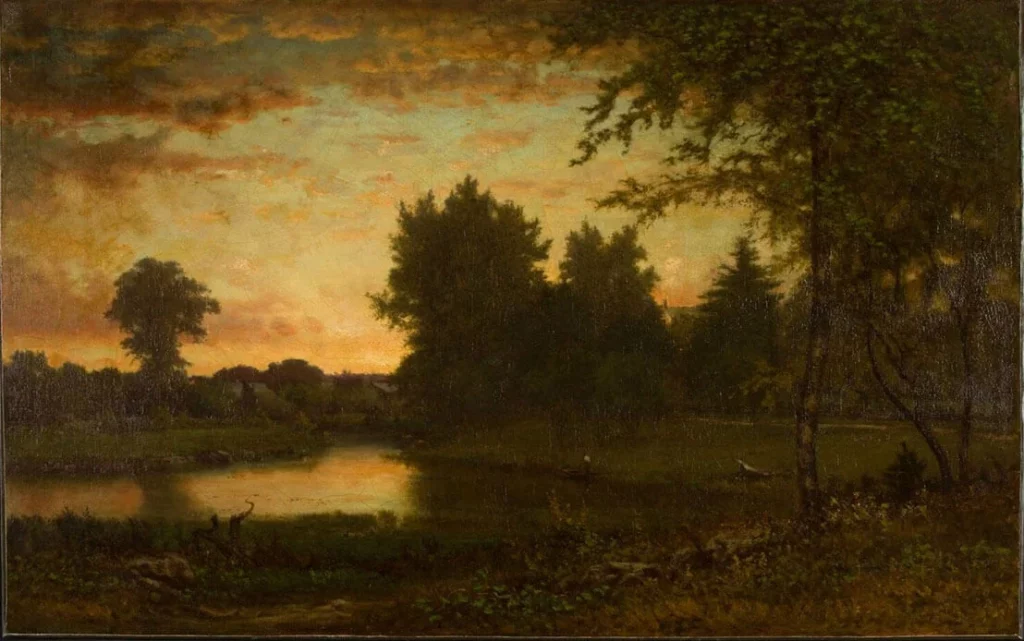
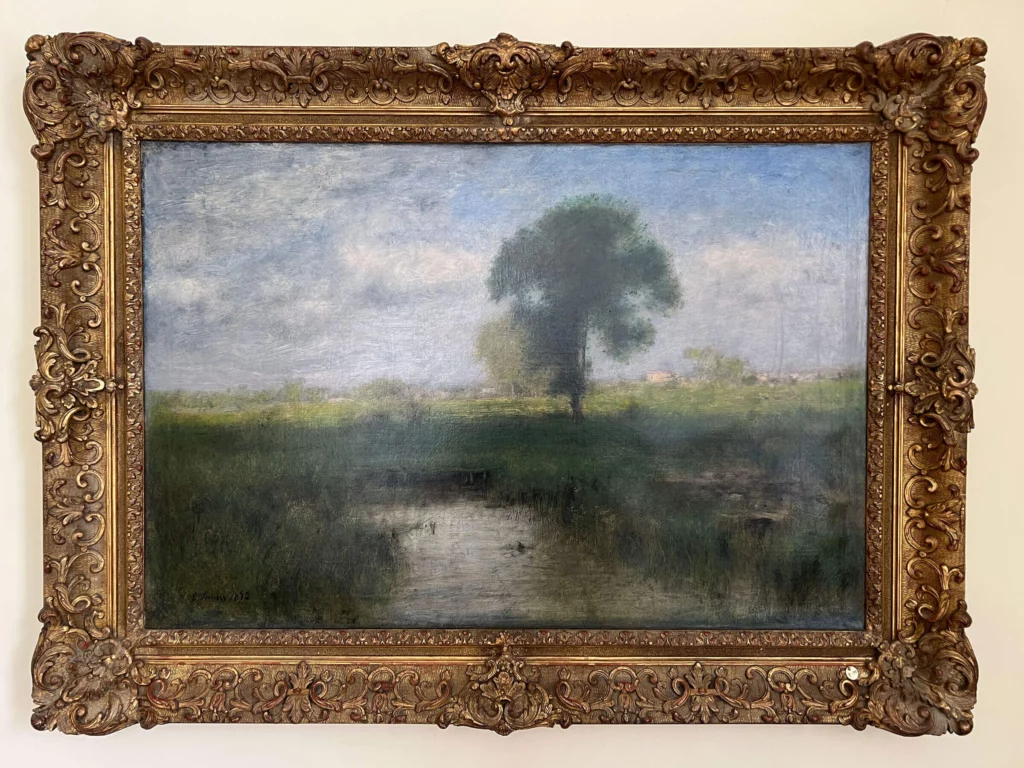
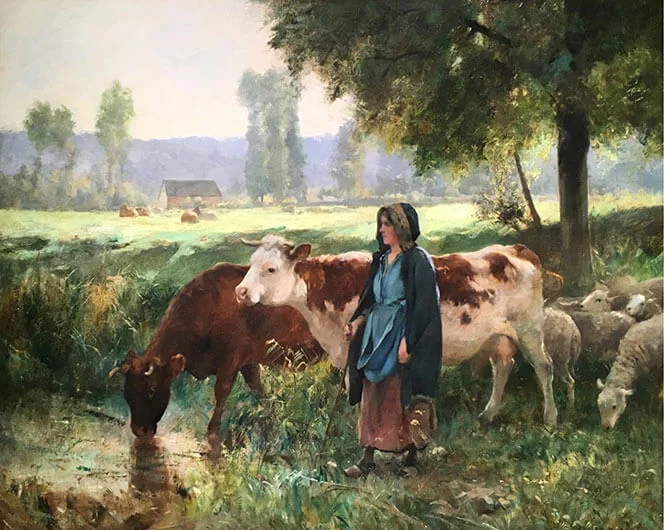
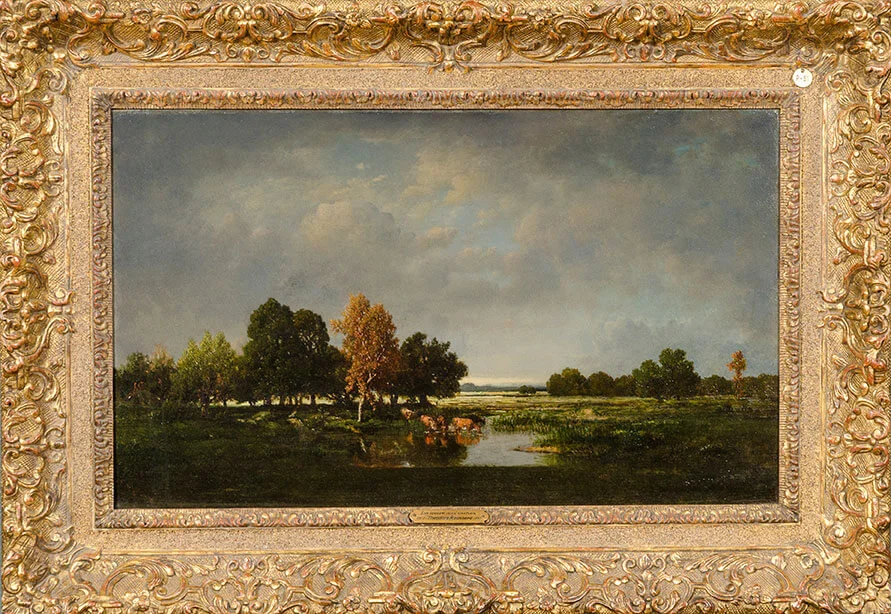
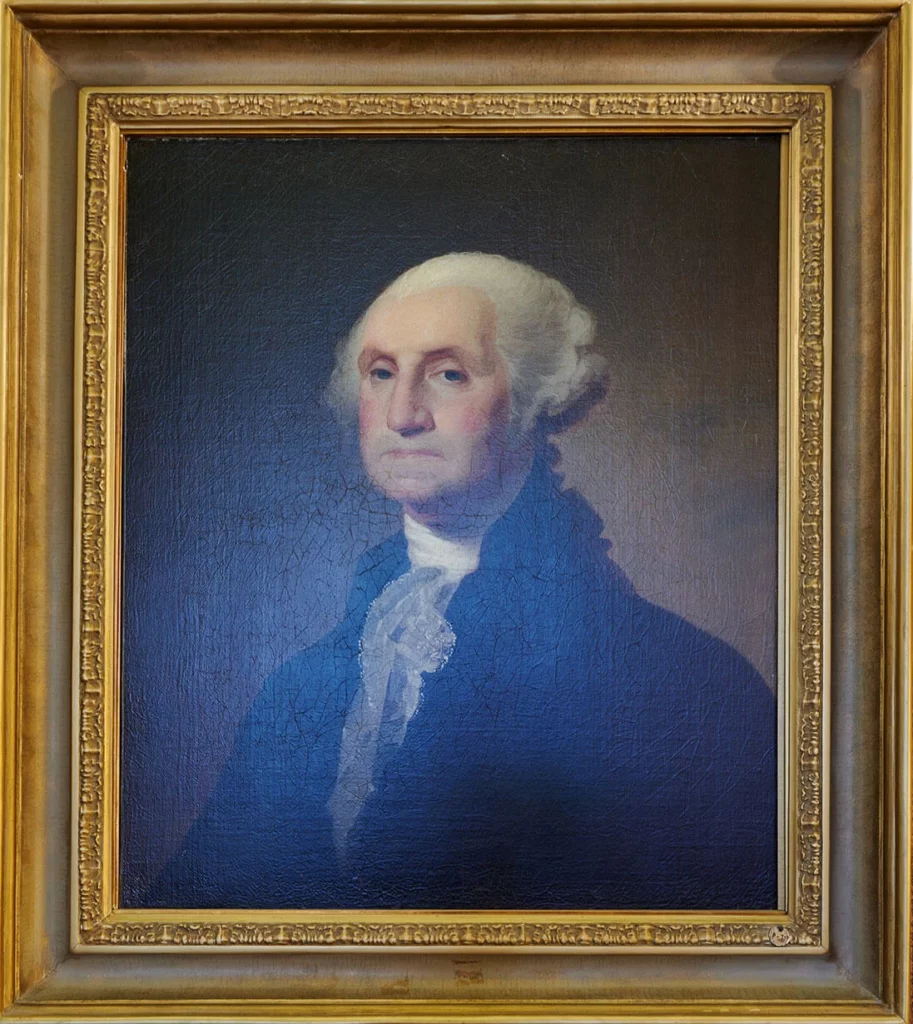 Phil Weston
Phil Weston A Stream in Wales
Author: Wilson Henry Irvine (American, 1869-1936)
Art Title: A Stream in Wales, 1923
Medium: Oil on canvas
Purchase/Acquired How: Museum purchase
Catalog #: 2013.1
Wilson Henry Irvine was an Impressionist landscape painter celebrated for his mastery of light and texture. After growing up in the Midwest, Irvine trained at the School of the Art Institute of Chicago, then established his artistic career in the city. Irvine eventually settled near Old Lyme, Connecticut, where he was an active member of the distinguished Lyme Art Colony.
Painted en plein air, or directly from nature, A Stream in Wales depicts a serene stream dappled with sunlight shining through the entwined branches above. With its lively brushstrokes and vibrant palette, this lush landscape shows Irvine’s skill in using contrasts of color and texture to create a sense of depth.
The purchase and conservation of this painting was the first venture of the Paine’s new Curator’s Council, a group dedicated to supporting the permanent collection by funding acquisition and conservation initiatives.
Anne of Denmark, Queen of England
Author: Anonymous, after Paul van Somer (Flemish, active in London, ca. 1576-1621/22)
Art Title: Anne of Denmark, Queen of England (1574-1619), ca. 1616-19
Medium: Oil on canvas
Purchase/Acquired How: Museum Purchase
Catalog #: 1982.1
The Paine’s permanent collection features several fine examples of English portraiture. This portrait was likely painted in the workshop of Flemish artist Paul van Somer, who moved to England in 1616 to work as a painter at the court of King James I. His most famous painting is a full-length portrait of Queen Anne almost identical to this composition in format, pose, costume, and accessories.
The Queen wears a lavish dress supported by a farthingale, a series of wood or metal hoops that gave the skirt a wide, cylindrical shape. The farthingale had gained popularity in Elizabethan court, and although James tried to forbid the ungainly fashion, Anne single-handedly kept the silhouette in vogue by insisting the style be worn at formal court affairs. As one observer noted, the Queen wore “so expansive a farthingale that … it was four feet wide at the hips.”
Children on the Beach
Author: Jozef Israëls (Dutch, 1824-1911)
Art Title: Children on the Beach, ca. 1875
Medium: Oil on canvas
Purchase/Acquired How: Gift of Nathan and Jessie Kimberly Paine
Catalog #: 1946.201
Jozef Israëls painted portraits and subjects from history early in his career, but turned to scenes of Dutch fisherman and peasants in the 1850s. He settled in The Hague in 1870s and became a leading member of The Hague School, a group of artists known for their depictions of landscapes and beach scenes. The carefree subject and simple charm of Children on the Beach would have appealed to a Victorian audience increasingly caught up in the bustle of industrialization.
Evening in the Hamlet of Finistère
Author: Jules Breton (French, 1827-1906)
Art Title: Evening in the Hamlet of Finistère, 1882
Medium: Oil on canvas
Purchase/Acquired How: Gift of Nathan and Jessie Kimberly Paine
Catalog #: 1946.145
A master of mood and poetic sentiment, Breton depicted his peasants with a sense of refinement and almost classical elegance, rather than focusing on hardship and the toil of their labor. This scene depicts peasants enjoying a moment of leisure at the end of the day. The village of Finistère is located in Brittany on the northwestern coast of France, and these figures wear the province’s traditional headdresses. Breton began working on this painting by sketching residents of Finistère during an 1880 visit. He completed the painting in 1882 and exhibited it that summer in Paris at the Salon. Critics admired the painting’s simplicity and austere subject, praising Breton’s ability to faithfully interpret the evening hour with an almost religious sentiment.
Koto Robertine Chase Carr Sullivan
Author: William Merritt Chase (American, 1849-1916)
Art Title: Koto Robertine Chase Carr Sullivan, ca. 1914
Medium: Oil on canvas
Purchase/Acquired How: Gift of Morris I. Kaplan
Catalog #: 1964.2
A gifted artist and influential teacher, William Merritt Chase was an extraordinarily versatile painter of light-filled Impressionist landscapes, decorative interiors, and realistic still lifes. Perhaps best known as one of the most accomplished portraitists of his day, Chase’s favorite models and subjects were his beloved wife and their eight children. Praised for their brilliant technique, sophistication, and charm, these deeply personal portrayals of his family embody the artist’s most magnificent and compelling work. An outstanding example of the artist’s mature style, this portrait of Koto reveals Chase’s vigorous brushwork, bold color palette, and masterful handling of light and shadow.
Lake St. John, Canada,
Author: Winslow Homer (American, 1836-1910)
Art Title: Lake St. John, Canada, 1895
Medium: Watercolor
Purchase/Acquired How: Gift of Nathan and Jessie Kimberly Paine
Catalog #: 1946.156
One of America’s most celebrated artists, Winslow Homer was an illustrator, printmaker, and painter in oils and watercolors. He began to use watercolor seriously in 1873 at age 37, and it quickly became a favored medium for recording the artist’s experiences and observations. Watercolor was quick drying and portable, and Homer could take the small, lightweight boxes and paper on boating trips and excursions into the wilderness. Creating over 700 watercolors, Homer developed a more spontaneous technique over time, which allowed him to experiment with light, color, and style depending on the mood and subject.
Morning on the Oise
Author: Charles-François Daubigny (French, 1817-1878)
Art Title: Morning on the Oise, 1866
Medium: Oil on canvas
Purchase/Acquired How: Gift of Nathan and Jessie Kimberly Paine
Catalog #: 1946.148
Charles-François Daubigny’s landscapes focus on the quiet rivers in France where he spent most of his life painting. In 1857 Daubigny purchased a houseboat, which he named Le Botin, and converted it into a floating studio. For two decades the artist navigated the waterways of France, painting scenes on the Oise, Loire, and Seine rivers. One of the first plein-air, or “open-air,” painters in France, he carefully studied the ever-changing sunlight and skies to record the immediacy of the moment before him. Daubigny’s naturalistic palette and mastery of light and atmospheric effects made him an important precursor to the Impressionists.
Portrait of a Lady of the Lennox Family
Author: Attributed to Paul van Somer (Flemish, active in London, ca. 1576-1621/22)
Art Title: Portrait of a Lady of the Lennox Family, ca. 1615-20
Medium: Oil on panel
Purchase/Acquired How: Museum Purchase
Catalog #: 1976.99
The sitter for this exquisite portrait was likely Katherine, wife of Esmé Stuart, third Duke of Lennox. She wears a cluster of pansies on her head and a black cord wrapped around her wrist and tied to the ring on her finger, both common accessories of the period. Although the artistic attribution remains in question, the style of the portrait is marked by careful observation, highly refined, delicate details, exquisite technique, and a sensitive rendering of the sitter’s likeness, all indicative of the work of Paul van Somer. The painter’s skill can be seen in the softness and luminosity of her skin, the natural sense of bone structure in her face, and the exquisitely painted details of her costume.
A similar portrait of the same sitter hangs in the Drawing Room at the country estate Deene Park in Northamptonshire, England, featuring “Lady of Lennox” as a young woman, perhaps at the time of her marriage. Scholars from the Yale Center for British Art believe the Paine’s picture was painted as a maternity portrait.
The Composers
Author: Harry Willson Watrous (American, 1857-1940)
Art Title: The Composers
Medium: Oil on canvas
Purchase/Acquired How: Gift of Nathan and Jessie Kimberly Paine
Catalog #: 1946.172
Regardless of subject, Watrous’s works are meticulously painted and rich in intriguing details. Between 1905 and 1918, Watrous painted a series of charming domestic scenes featuring stylish women in elaborate interiors, often accompanied by unusual birds, insects, or animals. With their highly refined style, harmonious color palette, and symbolic content, these works represent the most innovative phase of the artist’s career. Dating from this period, The Composers depicts an elegant woman seated at a table writing a letter. A pair of crows inspects the letter, and the scene is set against a backdrop of ornate wallpaper. Watrous’s ability to render the delicate translucence of the woman’s garment demonstrates his remarkable skill in painting fine details.
L’Abreuvoir (The Watering Place)
Author: Jean-Baptiste-Camille Corot (French, 1796-1875)
Art Title: L’Abreuvoir (The Watering Place), 1855-60
Medium: Oil on canvas
Purchase/Acquired How: Gift of Nathan and Jessie Kimberly Paine
Catalog #: 1946.143
A pivotal figure in the development of French landscape painting, Jean-Baptiste-Camille Corot bridged the gap between the classical landscape tradition and the spontaneity and modernity of Impressionism. He sketched and painted outdoors, anticipating the Impressionists’ open-air approach. Often associated with the Barbizon School, Corot painted in the area in the late 1840s and developed close friendships with many of the artists.
L’Abreuvoir (The Watering Place)
Author: Emile van Marcke de Lummen (French, 1827-1890)
Art Title: L’Abreuvoir (The Watering Place)
Medium: Oil on canvas
Purchase/Acquired How: Gift of Nathan and Jessie Kimberly Paine
Catalog #: 1946.144
Emile van Marcke de Lummen was active in the Barbizon School, a group of artists named after a small village on the outskirts of the Forest of Fontainebleau, about 40 miles from Paris. The artists who settled there advocated painting directly from nature and were devoted to rural subjects and to landscape painting as an art form in its own right.
Wallachian Pack Train
Author: Adolphe Schreyer (German, 1828-1899)
Art Title: Wallachian Pack Train
Medium: Oil on canvas
Purchase/Acquired How: Gift of Nathan and Jessie Kimberly Paine
Catalog #: 1946.150
German Romantic painter Adolphe Schreyer is best known for his powerful depictions of horses and his interest in exotic imagery derived from extensive travels in Europe and the East. He painted with a rich color palette and in an expressive, dynamic style. In 1855 he served as a field artist in the Crimean War. During and after the war, Schreyer executed a major series of paintings about Wallachia, a historical region of present-day Romania described as a bleak country with an extreme climate.
Wash Day on the Marne
Author: Léon-Augustin Lhermitte (French, 1844-1925)
Art Title: Wash Day on the Marne, 1890
Medium: Oil on canvas
Purchase/Acquired How: Gift of Nathan and Jessie Kimberly Paine
Catalog #: 1946.10
A skilled draughtsman and painter of rural life, Léon-Augustin Lhermitte depicted peasants at work in the French countryside. Characterized by subtlety and grace, Lhermitte’s images of laborers focus on the quiet dignity of their work and reveal the artist’s compassion for their way of life. Known for the masterful way he integrated figures within the landscape, Lhermitte was praised by Vincent van Gogh as “the absolute master of the figure.”
The Afterglow
Author: George Inness (American, 1825-1894)
Art Title: The Afterglow, 1864-65
Medium: Oil on canvas
Purchase/Acquired How: Gift of Nathan and Jessie Kimberly Paine
Catalog #: 1946.147
One of America’s most celebrated landscape painters, George Inness is considered the founder of Tonalism, a style marked by soft focus, delicate veils of paint, poetic luminosity, and evocative atmospheric effects. His serene views grew out of the American tradition of romanticizing nature. Though he followed in the footsteps of the French Barbizon School artists and the American Hudson River School painters, Inness departed from their highly detailed, naturalistic scenes to create a more subjective, expressive style that foreshadowed modernism.
This radiant painting of a sunset reveals the serene, poetic dimension of Inness’s work. Painted early in his career, The Afterglow was executed during the Civil War, when Inness was working as an art teacher at Eagleswood, a private military academy and artists’ colony in New Jersey. An ardent abolitionist, Inness was unable to enlist in the military after a failed physical exam. During the war, he attended rallies, gave speeches, and recruited volunteers for the Union cause.
A Spring Morning
Author: George Inness (American, 1825-1894)
Art Title: A Spring Morning, 1892
Medium: Oil on canvas
Purchase/Acquired How: Gift of Mrs. Jessie Kimberly Paine
Catalog #: 1962.2
Acclaimed American landscape painter George Inness settled in Montclair, New Jersey, in 1878, marking the beginning of what many scholars view as the artist’s most accomplished, mature period. By this point in his career, Inness had developed a distinctive Tonalist style, painting landscapes imbued with his subjective response to scenery, light, atmosphere, and season. During the final decade of his life—when this work was created—Inness was harmonizing color, space, and light to create landscapes that expressed the depth of his spiritual connection with nature. He remarked that it was mood and his impressions of nature that he aimed to capture, rather than the visible, accurate details of a scene. With its lush green hues and misty atmosphere, A Spring Morning embodies the beauty and serenity Inness found in nature.
Dans la Vallée (In the Valley)
Author: Julien Dupré (French, 1851-1910)
Art Title: Dans la Vallée (In the Valley)
Medium: Oil on canvas
Purchase/Acquired How: Gift in loving memory of Charles Fritz Hyde by his family
Catalog #: 2019.1
Scenes of rural life in the French countryside were the favorite motifs for Julien Dupré, an accomplished painter active in the last half of the nineteenth century. Dans la Vallée masterfully combines the various styles that influenced Dupré as a French artist during this period. The serene, idealized peasant figure and finely rendered farm animals reflect the artist’s academic training in the Realist tradition, while Dupré’s devotion to nature and agrarian themes align him with the Barbizon School. The fresh approach of the Impressionists can be seen in the loose, expressive brushwork of the surrounding landscape, vibrant color palette, and play of light and shadow in the valley.
Dupré exhibited paintings at the famed Paris Salon every year from 1876 until his death in 1910. During his lifetime, he was successful among collectors both in France and the United States and earned critical acclaim for his depictions of rural life, including a gold medal at the 1889 Paris Exposition Universelle and the prestigious Legion of Honor award in 1892.
La Mare aux Vaches (The Cow Pond)
Author: Pierre Étienne Théodore Rousseau (French, 1812-1867)
Art Title: La Mare aux Vaches (The Cow Pond), ca. 1855
Medium: Oil on panel
Purchase/Acquired How: Gift of Nathan and Jessie Kimberly Paine
Catalog #: 1946.202
Théodore Rousseau was considered a leader of the Barbizon School, an informal group of artists named after a small village on the outskirts of the Forest of Fontainebleau, about 40 miles from Paris. Passionate about nature from an early age, Rousseau first visited the area in 1833, eventually settling in Barbizon the following decade along with Jean-François Millet, Jules Dupré, and many other artists. They advocated painting directly from nature and were interested in landscape painting as an art form in its own right. Painted in the lowlands of Fontainebleau, The Cow Pond illustrates Rousseau’s close observation of nature, meticulous technique, and rich color palette. The composition’s low horizon and expansive, moody sky recall the landscapes of the seventeenth-century Dutch masters, whom Rousseau had long admired.
George Washington
Author: Attributed to Gilbert Stuart (American, 1755-1828)
Art Title: George Washington, circa 1797-1803
Medium: Oil on canvas
Purchase/Acquired How: Gift of Nathan and Jessie Kimberly Paine
Catalog #: 1948.175
This portrait of George Washington (1732–1799), our nation’s first president, was likely painted by Gilbert Stuart, the most successful portrait painter of early America. Renowned for his depictions of some of the most prominent men and women of his era, Stuart demonstrated tremendous natural talent in the representation of likeness and personal character.
Sometime in 1795, during the president’s second term in office, Stuart painted his first portrait of Washington. Stuart would go on to paint from life three distinct compositions: the Vaughan (waist-length, right side of face); the Athenaeum (waist-length, left side of face) seen here; and the full-length Lansdowne portrait. Stuart’s portraits of Washington were a success, and there was a high demand for replicas of each format. Over the course of his career, Stuart painted at least one hundred versions of the three portrait compositions.
Stuart’s most well-known, popular version was the Athenaeum, named for the original portrait’s long-time owner, the Boston Athenaeum. Stuart would use the Athenaeum portrait to create approximately seventy-five replicas, which he sold for $100 each. This celebrated image of Washington is the likeness that appears today on the United States one-dollar bill.
The Paine’s portrait is a version of the Athenaeum type composition, depicting President Washington in a simple black coat with a white ruffle shirt. As with many replicas, the authenticity of the Paine’s portrait has been the subject of some discussion over the years. Nathan Paine, founder of the Paine, purchased this portrait in 1929 from Anderson Galleries of Chicago. This prized addition was the highest price they ever paid for an artwork in their collection. Anderson Galleries provided a lengthy affidavit from the portrait’s former owner outlining in extensive detail the history of the painting’s ownership as it descended through a single family from the early 1800s until Mr. Paine’s purchase in 1929. If the account is correct, the painting’s original owner, Winthrop Sargent (1753-1820), Governor of the Mississippi Territory, probably purchased the Washington portrait directly from Gilbert Stuart, who painted Sargent and his wife around 1805.
The painting was examined and underwent conservation treatment in the mid-1960s in Boston, where several experts were asked to assess the painting’s authorship. While opinions varied, two particularly strong endorsements led the Paine’s staff at that time to presume that the portrait did indeed originate from Stuart’s studio. However, because Stuart created so many replicas of the Athenaeum portrait—in varying quality and with subtle changes to the features—and because imitators created outright copies, we may never know the definitive answer regarding the portrait’s authenticity. Furthermore, like many great artists before him, Stuart oversaw an active painting studio with assistants, which makes it challenging to determine the work of Stuart’s hand versus those who worked alongside him. While the painting has not been examined by Stuart scholars in recent years, today we can enjoy the intriguing story and appreciate this fine likeness of our nation’s first president.
Information about this artwork is derived from the exhibition catalogue Gilbert Stuart by Carrie Rebora Barratt and Ellen G. Miles, published in 2004 by The Metropolitan Museum of Art in New York.
Sculptures
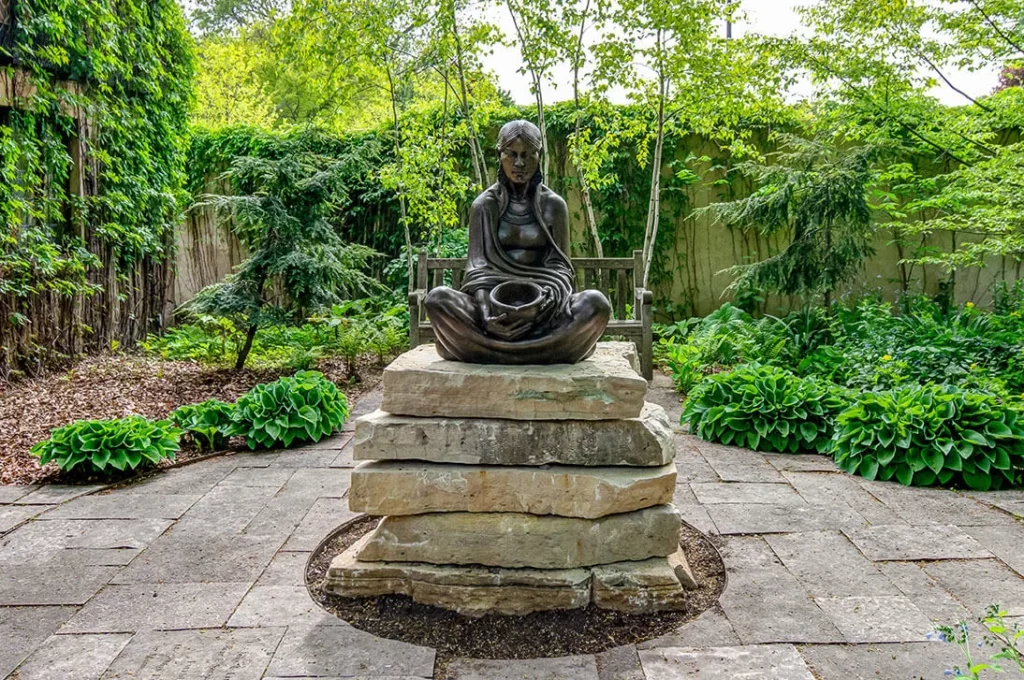 Eric Reischl
Eric Reischl 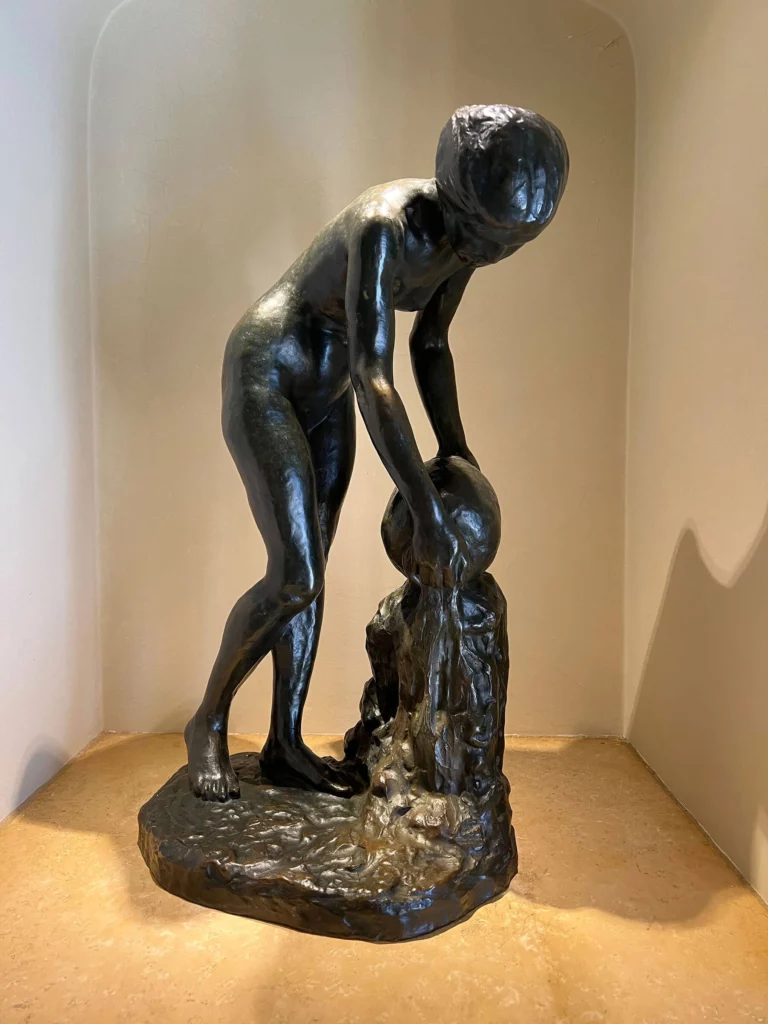
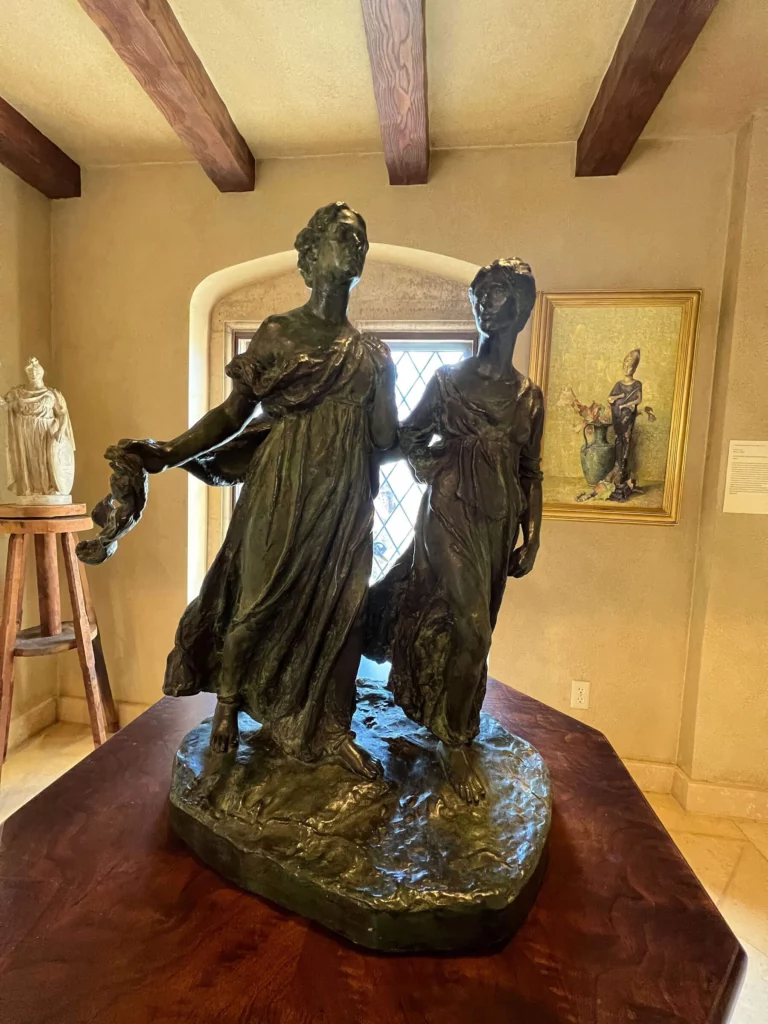
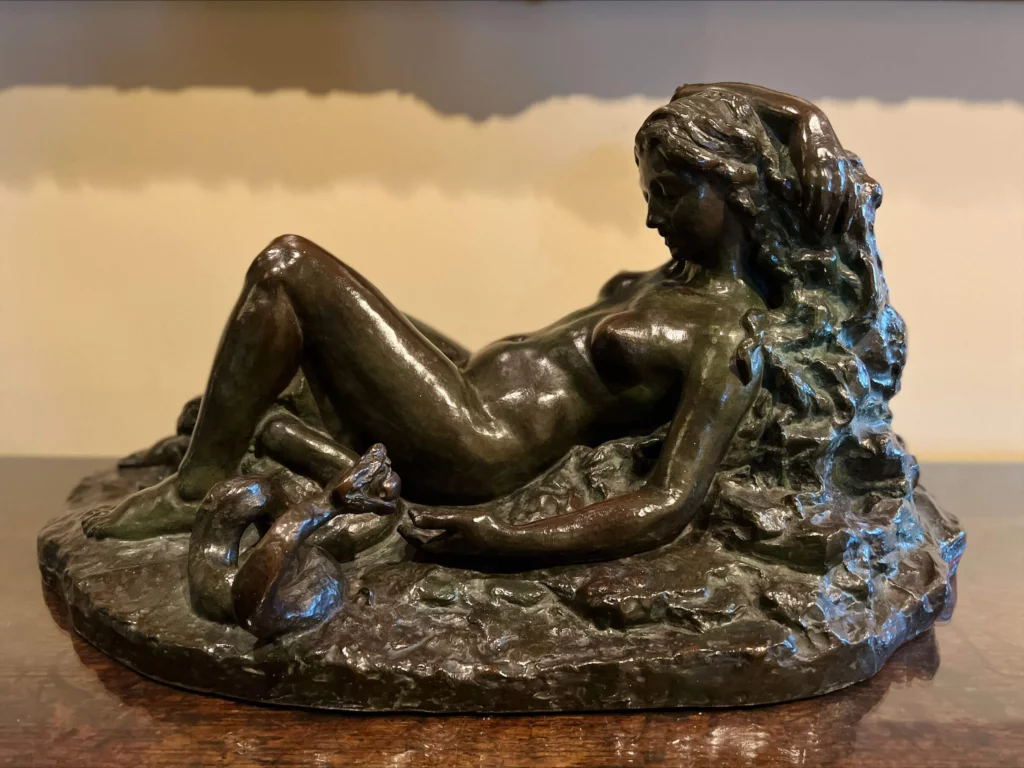

Winnebago Lady
Author: Donal Hord (American, 1902-1966)
Art Title: Winnebago Lady (1955)
Medium: Bronze
Purchase/Acquired How: Gift of Jessie Kimberly Paine
Catalog #: 1946.26
Sculptures from the museum’s art collection accent the Paine’s gardens, including this rare and beautiful work by Wisconsin artist. Titled Winnebago Lady, the bronze sculpture was commissioned by Jessie Kimberly Paine in 1955. Mrs. Paine and the artist had become friends, as both were living in southern California at that time. An accomplished sculptor with many significant projects in the San Diego area, Hord considered Winnebago Lady one of his finest works.
Depicting a serene portrait of a Native American woman draped in a buckskin dress and wool blanket, Winnebago Lady was cast at the Bearzi Foundry in Italy and hand-tooled to achieve an array of distinctive textures, including a stippled effect to convey the coarseness of her wool blanket. The sculpture is placed in a lush, shady spot within the Paine’s gardens, allowing visitors to enjoy a 360-degree view of Winnebago Lady. Following a circular path around the figure, visitors may see all of the special details that make this one-of-a-kind sculpture unique, including her intricate shell earrings and the elegant braid and beadwork hair ornament that hang down her back. The portrait is an artistic interpretation of a Ho-Chunk woman, which Hord described in a letter to Mrs. Paine: “. . . I thought of the figure as the spirit of some fern-surrounded spring deep in the forest, offering a cool drink to the life passing by, whether human or animal.”
Urn
Author: Helen Farnsworth Mears (American, 1871 – 1916)
Art Title: Urn, 1915
Medium: Bronze
Purchase/Acquired How: Gift of Nathan and Jessie Kimberly Paine
Catalog #: 1946.132
The Paine preserves the most extensive collection of sculptures by Oshkosh native Helen Farnsworth Mears (1871-1916). Born into a family of creative women, Helen Farnsworth Mears began sculpting at an early age using modelling tools her father had fashioned for her by hand. Her mother, Mary Elizabeth Mears, was a poet and playwright, while her sister Mary would become a novelist and tireless champion of her sister Helen’s legacy. A second sister, Louise, worked as an artist and illustrator prior to marrying and raising a family.
Helen’s artistic interests were fostered by her father and by an aunt who provided funding for her studies. At age 21, Mears enrolled at the School of the Art Institute of Chicago, where she studied under the direction of Lorado Taft. Taft was working as superintendent of sculpture for the 1893 World’s Columbian Exposition alongside Daniel Burnham, the fair’s chief architect. When Burnham expressed concern that sculptural decorations may not be completed in time, Taft proposed hiring some of his best female students for the project. Although sculpture was traditionally a male domain, Burnham famously told Taft, “Hire anyone, even white rabbits, if they’ll do the work.” This talented group of women sculptors—Mears included— were dubbed the “White Rabbits.” In addition to their work with Taft, some received additional commissions, including Mears’s prize-winning sculpture Genius of Wisconsin for the fair’s Wisconsin building. Using her prize money to enroll at the Art Students’ League in New York, Mears met renowned sculptor Augustus Saint-Gaudens and became his first female assistant. After time spent studying and working in France and Italy, Helen and Mary settled in New York and established Helen’s professional studio practice. There she completed many important commissions, portraits, and artful compositions, including this graceful classical nude pouring water from an urn.
Dawn and Labor
Author: Helen Farnsworth Mears (American, 1871 – 1916)
Art Title: Dawn and Labor, 1909
Medium: Bronze
Purchase/Acquired How: Gift of the Oshkosh Twentieth Century Club
Catalog #: 2009.2
Dawn and Labor is one of Mears’s most accomplished works. The two figures likely represent Mary Mears as Dawn, gliding forward with uplifted gaze and drapery afloat, perhaps drawn by a distant dream, and Helen as Labor, gazing to her right, feet firmly planted. In describing this composition, Helen wrote:
“I had a vision of one soul walking firmly on the earth, saddened, through experience, but eager, very eager and of another soul, inexperienced but a seer of a vision, of light. That leads wither no man can say, but the light that leads safely. To this figure it was my aim to give a sense of scarcely touching the earth with her feet.”
Reclining Eve
Author: Helen Farnsworth Mears (American, 1871 – 1916)
Art Title: Reclining Eve, 1914
Medium: Bronze
Purchase/Acquired How: Museum Purchase
Catalog #: 1972.1
Mears believed Reclining Eve was her finest artwork. The smooth surface treatment of Eve contrasts with the rough-hewn texture of the surrounding, rugged landscape. The composition is infused with impending movement, as Eve ponders her choice to accept the forbidden fruit offered by the serpent. Bronze casting was an expensive undertaking, and the Mears sisters’ financial struggles did not allow for the casting of this sculpture during Helen’s lifetime. Just two years after modeling this figure, Helen died unexpectedly in February 1916 at the peak of her career. At the time of her death, her studio was filled with dozens of plaster, clay, and wax compositions yet to be cast in bronze, such as Reclining Eve. In the years following Helen’s death, Mary would ensure the preservation of her sister’s artistic legacy by raising funds to cast artworks in bronze and placing finished sculptures in public collections.
End of the Day
Author: Helen Farnsworth Mears (American, 1871 – 1916)
Art Title: End of the Day, 1914
Medium: Bronze
Purchase/Acquired How: Gift of Nathan and Jessie Kimberly Paine
Catalog #: 1946.135
One evening Helen observed an exhausted laborer riding the subway in New York. For Mears, the man represented what she described as the “endless toil” of laborers and the working classes. She began work on this small figure the next day, conveying her memory of the weary laborer as a miner slumped over with his shovel. This work is unusual for Mears with its bleak subject and expressive style. The rough, dynamic surfaces may reveal a new, modern direction in Mears’s work, perhaps influenced by French sculptor Auguste Rodin (1840 – 1917) who revolutionized sculpture with his emotionally charged representations of the human spirit.
Tiffany Lamps
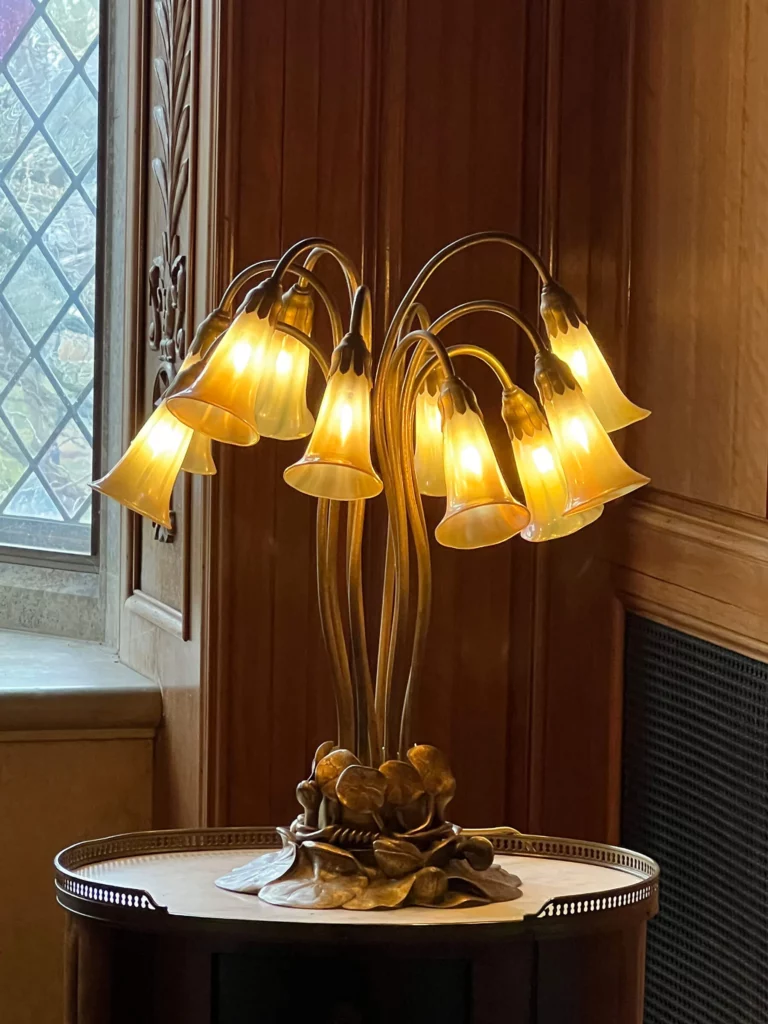 Ken Cravillion
Ken Cravillion 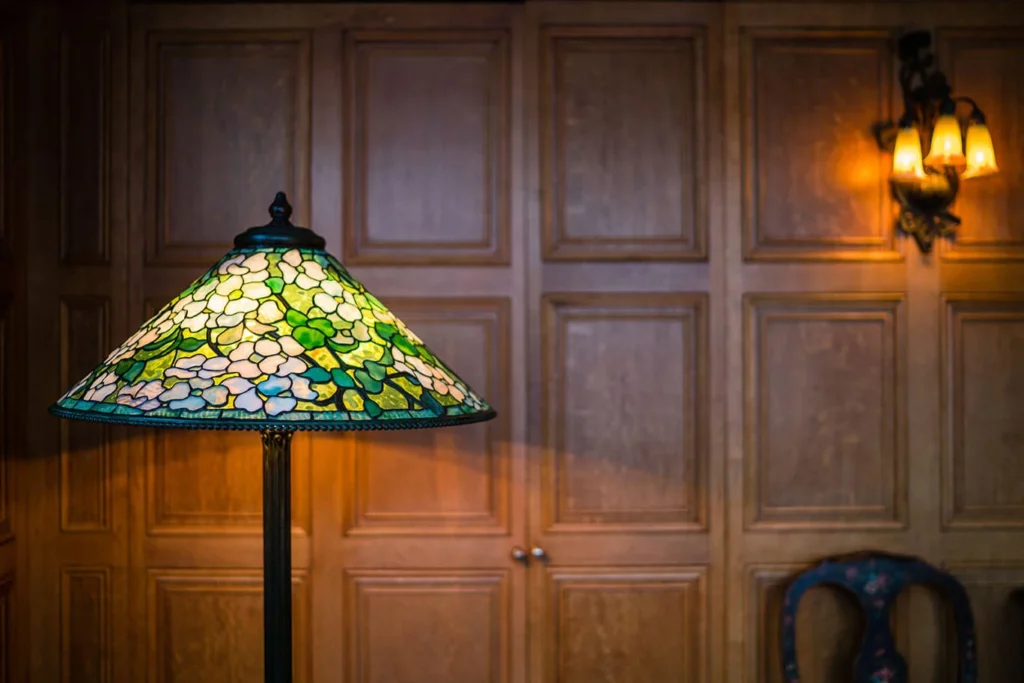 Ken Cravillion
Ken Cravillion 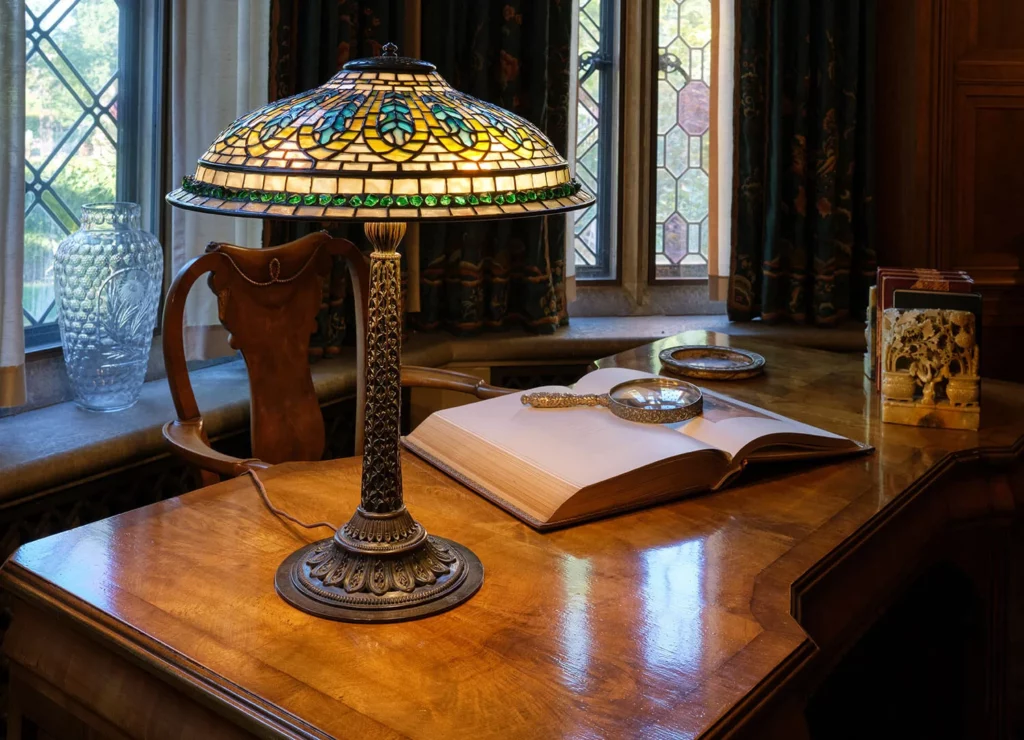 Phil Weston
Phil Weston 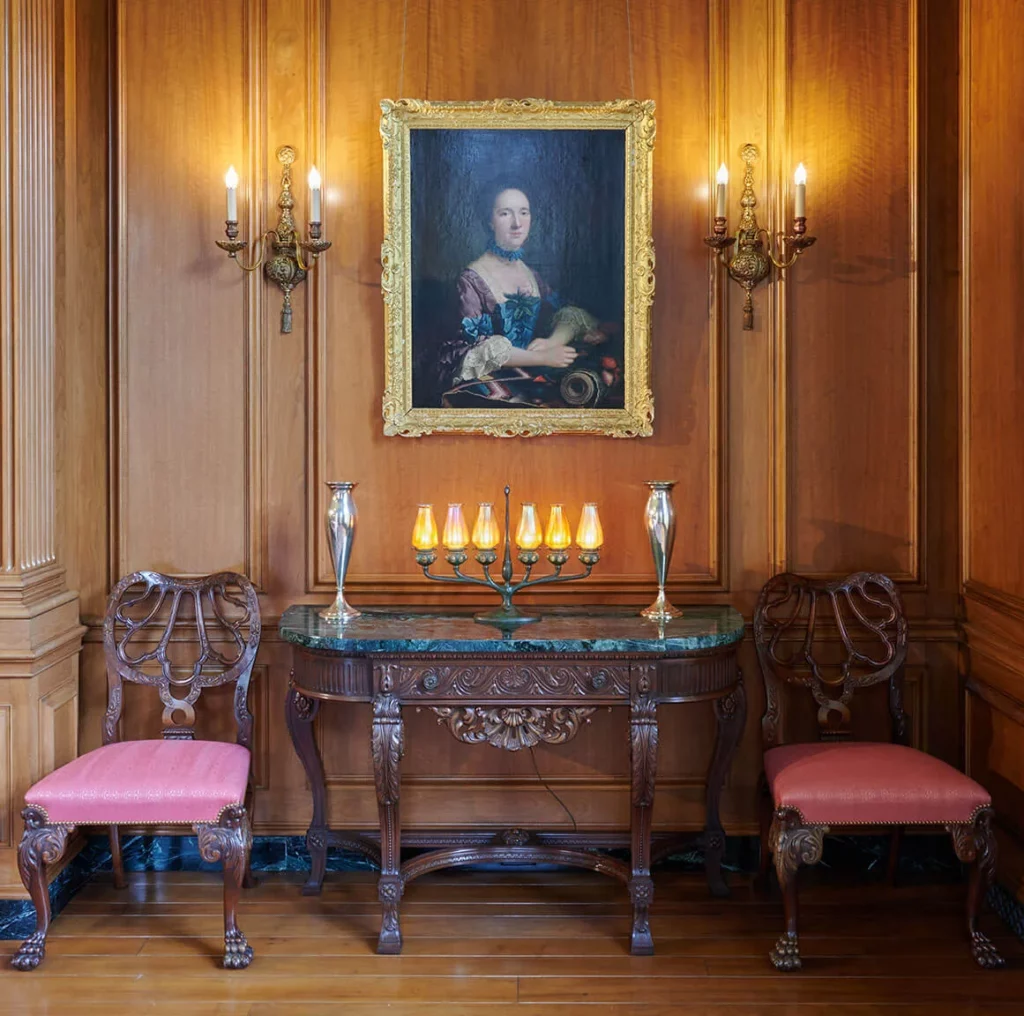 Phil Weston
Phil Weston 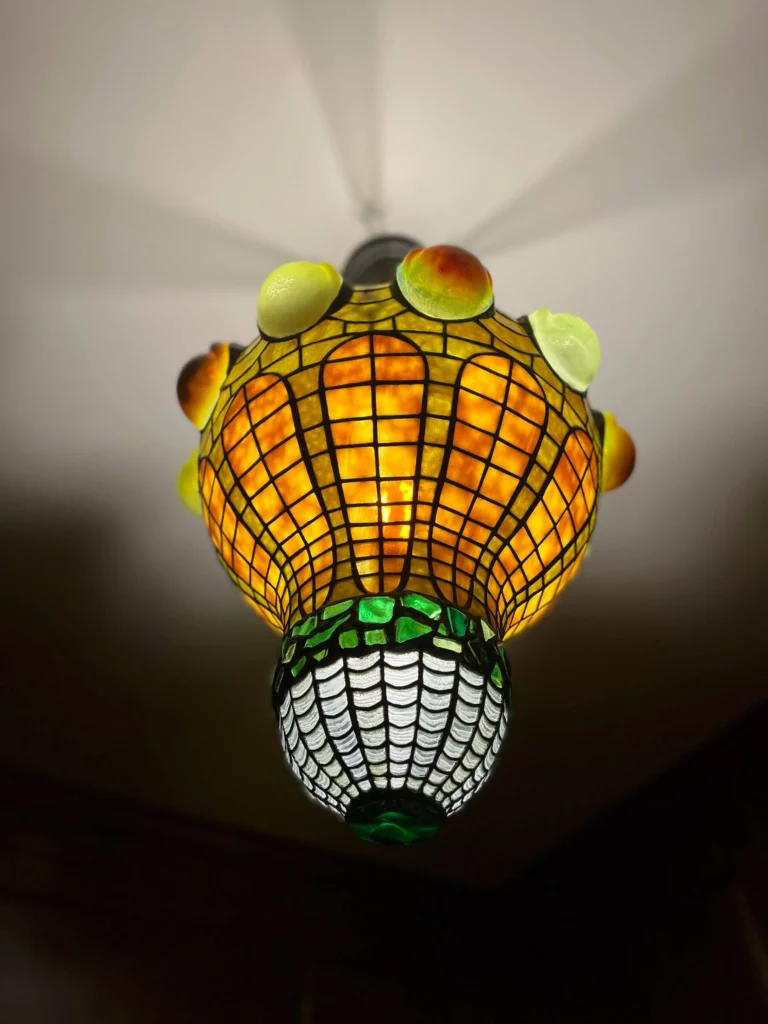
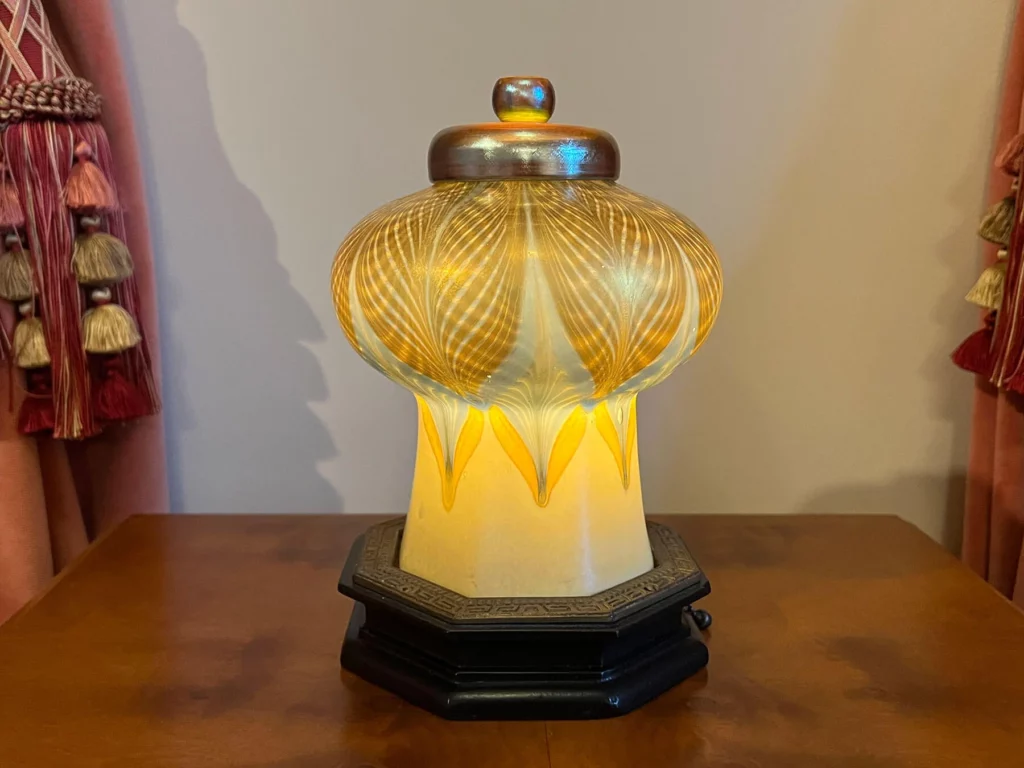
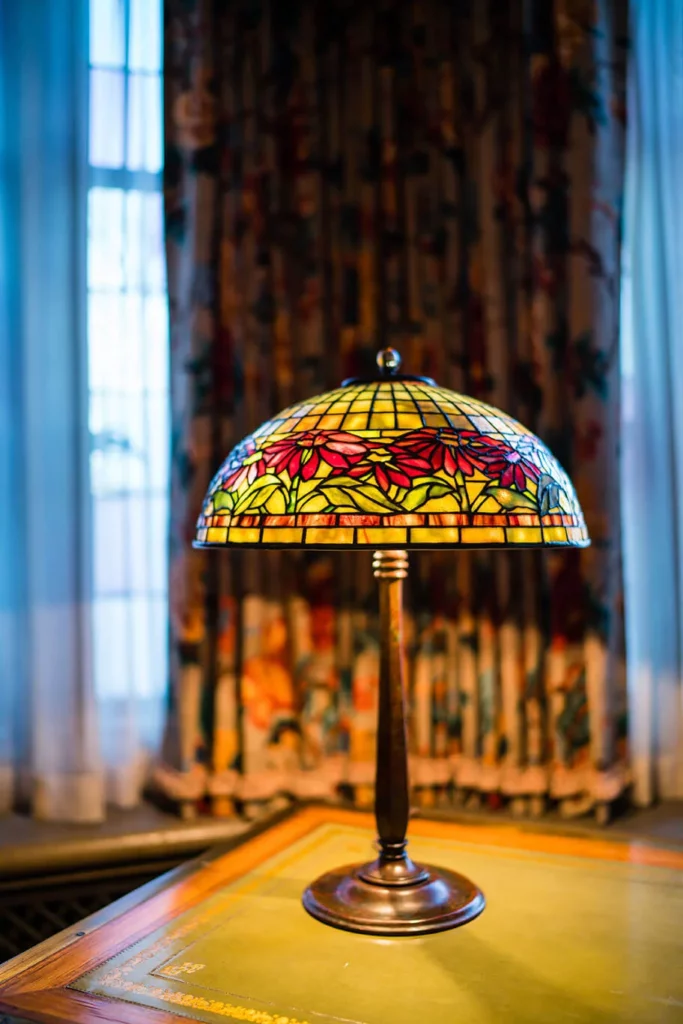 Ken Cravillion
Ken Cravillion 10-Light Lily Table Lamp
Author: Tiffany Studios (New York, 1902-1932)
Art Title: 10-Light Lily Table Lamp, after 1902
Medium: Blown glass and gilt bronze
Purchase/Acquired How: Anonymous Gift
Catalog #: 2005.2
This remarkable lamp was made by American artist and designer Louis Comfort Tiffany (American, 1848-1933) at the turn of the twentieth century, just as electricity was being introduced into American homes. Tiffany ultimately developed an entirely new art form, pioneering the artistic use of the light bulb to create decorative objects that were both elegant and utilitarian. While many Tiffany lamps feature leaded-glass shades, others are adorned with blown glass Favrile shades, such as this example. Tiffany’s iridescent blown glass was patented in 1894 under the name Favrile, derived from an Old English word for handcrafted.
Nature was Tiffany’s primary source of inspiration, as is apparent in every aspect of this lamp, from its floral shades and stems to its lily pad base and light switch. The company’s Lily “cluster” lamps varied in blossom number and were produced in table, floor, and ceiling models. Capturing the essence of the international Art Nouveau movement, the graceful bouquet of iridescent lilies conceals the light bulbs, which nestle within the natural form of the flowers.
Dogwood Floor Lamp
Author: Tiffany Studios (New York, 1902-1932)
Art Title: Dogwood Floor Lamp
Medium: Leaded glass and bronze
Purchase/Acquired How: Anonymous Gift
Louis Comfort Tiffany, founder of Tiffany Studios, trained as an artist and worked in a wide variety of media, including painting, interior design, ceramics, metalwork, enamel, and, most notably, glass. The Paine’s leaded-glass Dogwood floor lamp highlights Tiffany’s interest in nature and floral motifs. Tiffany often proclaimed, “Nature is always beautiful,” drawing inspiration for his designs from flowering dogwood trees to peonies, vines, dragonflies, spider webs, mushroom caps, and much more. With its multi-hued white blossoms on a mottled green ground, the Dogwood floor lamp is an outstanding example of Tiffany’s innovations in glass.
Gentian Table Lamp
Author: Tiffany Studios (New York, 1902-1932)
Art Title: Gentian Table Lamp, ca. 1903-10
Medium: Leaded glass and bronze
Purchase/Acquired How: Anonymous Gift
With its stylized rendering of blue and green gentiana floral stalks set within Gothic arches, this leaded-glass shade combines Tiffany’s interest in floral motifs and geometric patterns. The shade is further decorated with a band of emerald-green “chunk” jewels around the rim. The intricate, openwork base is referred to as an Indian Hookah design and also features floral stalks and Gothic arches to complement the shade.
Pair of 6-Light Electrified Candelabras
Author: Tiffany Studios (New York, 1902-1932)
Art Title: Pair of 6-Light Electrified Candelabras
Medium: Blown glass and bronze
Purchase/Acquired How: Anonymous Gift
This pair of candelabras with iridescent blown-glass shades was converted from candlelight to electricity in the early twentieth century. Tiffany’s candle-lit lamps were important precursors to his electric lamps, revealing the artist’s early interest in elegant forms of lighting and in the play of light on glass. He was fascinated with all periods of illumination, ranging from ancient Pompeian oil lamps to medieval stained-glass windows to Renaissance candelabra.
Geometric Chandelier with blown glass jewels
Author: Tiffany Studios (New York, 1902-1932)
Art Title: Geometric Chandelier with blown glass jewels
Medium: Leaded and blown glass and bronze
Purchase/Acquired How: Anonymous Gift
This highly unusual hanging fixture features a geometric pattern that starts at the bottom with a green “Turtleback” tile and culminates at the top rim with a series of ten opalescent, blown-glass teardrop jewels, giving the lamp a whimsical, almost otherworldly quality.
Mosque Table Lamp
Author: Tiffany Studios (New York, 1902-1932)
Art Title: Mosque Table Lamp
Medium: Blown glass, ebonized wood, and bronze
Purchase/Acquired How: Anonymous Gift
Displayed on the bedside table in the Master Bedroom, this Mosque lamp is a luminous translation of Louis Comfort Tiffany’s interest in Islamic themes and distant, exotic cultures. Its diminutive scale was probably inspired by the small fuel lamps Tiffany saw during his travels in the Near East.
The Favrile mosque is decorated with a “pull-feather” motif outlined in gold. It is topped with a heat cap that includes a hole for ventilation. The octagonal wooden base features bronze trim with a rectilinear Greek key motif.
Poinsettia Table Lamp
Author: Tiffany Studios (New York, 1902-1932
Art Title: Poinsettia Table Lamp
Medium: Leaded glass and bronze
Purchase/Acquired How: Anonymous Gift
In his leaded-glass windows and lampshades, Tiffany and the designers and artisans at Tiffany Studios eliminated the need for painting the glass by producing sheets of opalescent glass that incorporated shading, streaking, varying levels of opacity, textures, and a multitude of colors. Their use of opalescent glass was like painting with the glass itself, as seen in this vibrant Poinsettia shade.
Support the Paine
The Paine is a nonprofit organization that relies upon the generosity of people and organizations for support. When you make a donation to the Paine, you can designate your gift to support efforts like preserving the historic estate, art collection, and more.